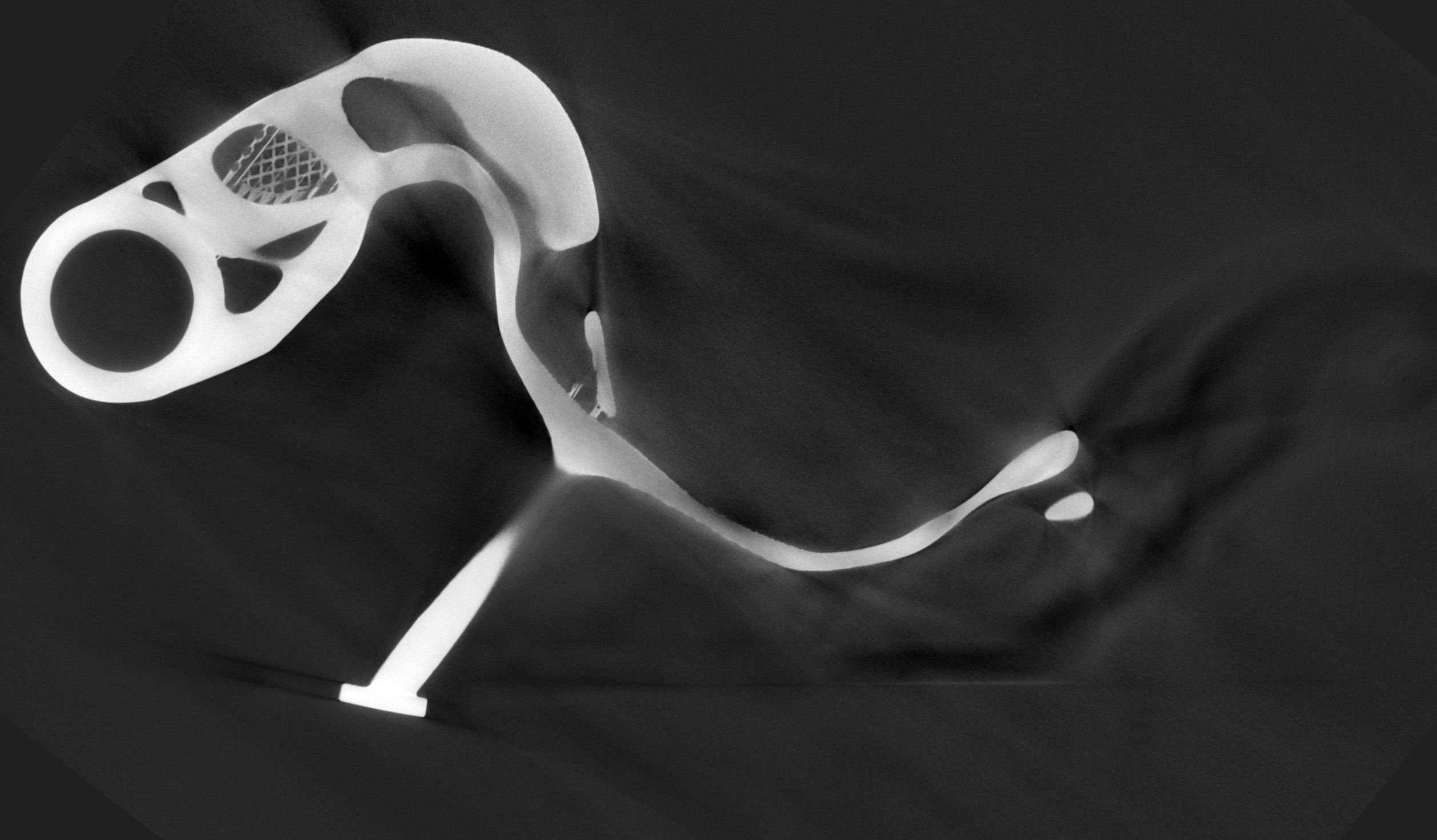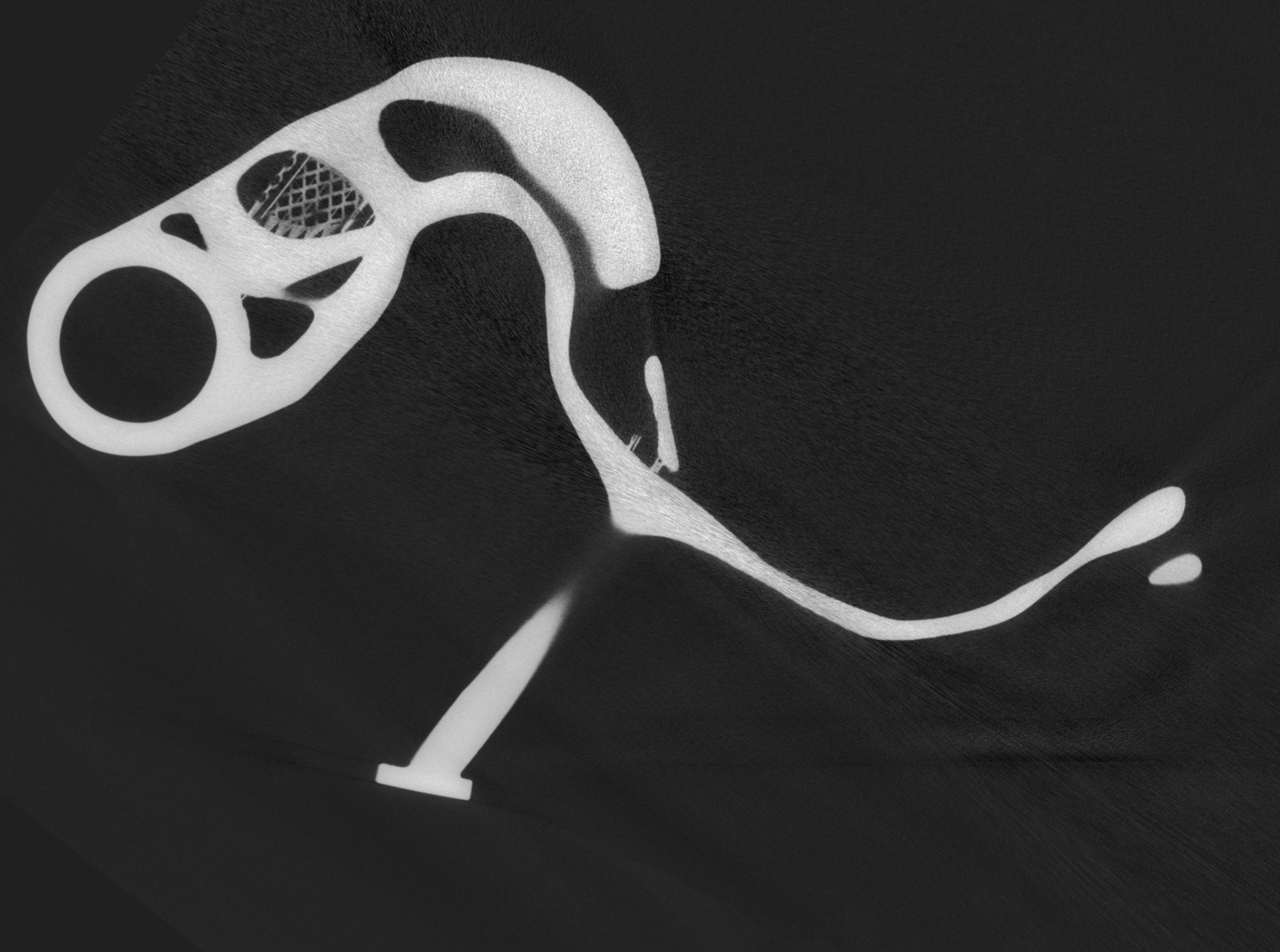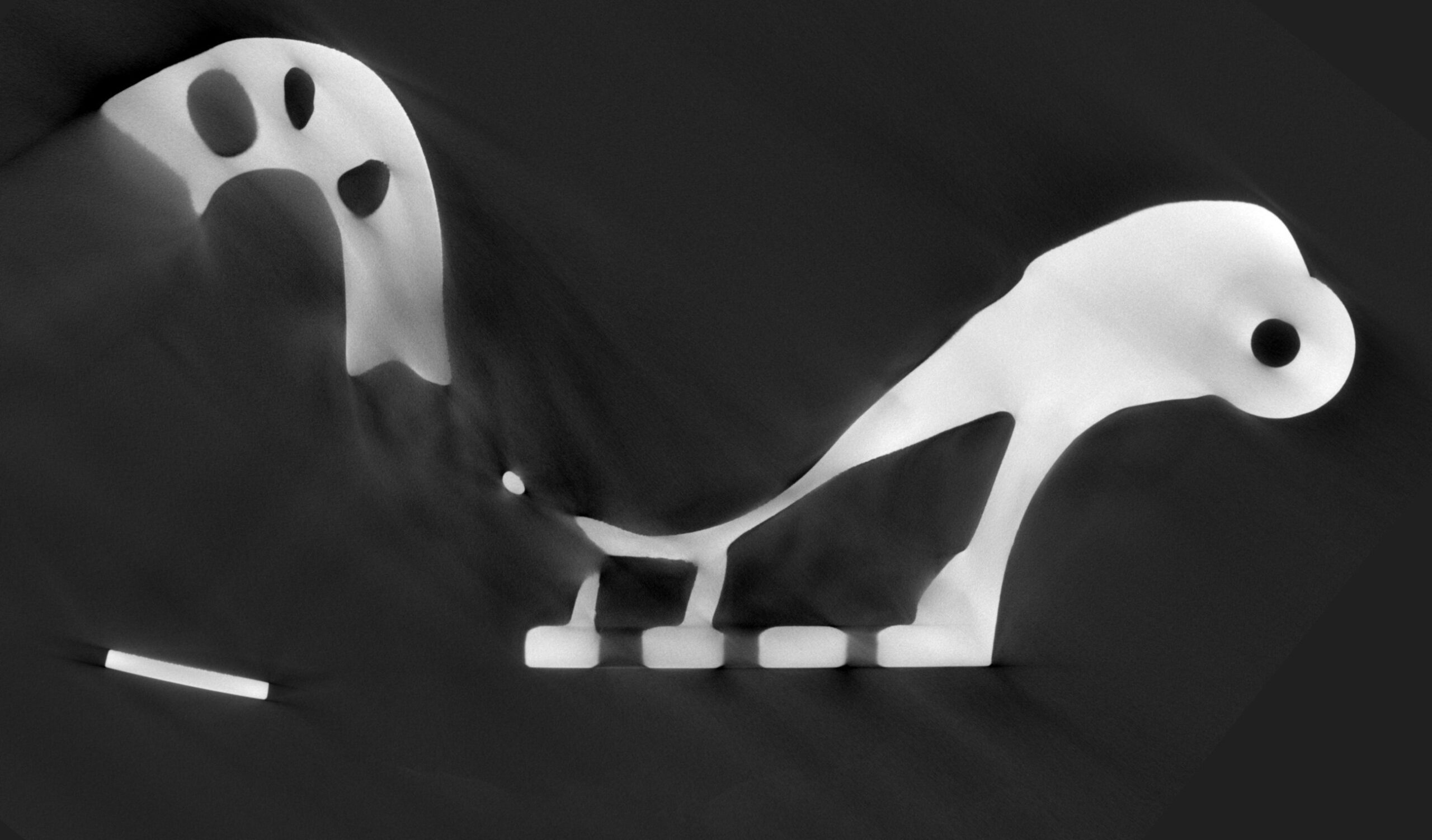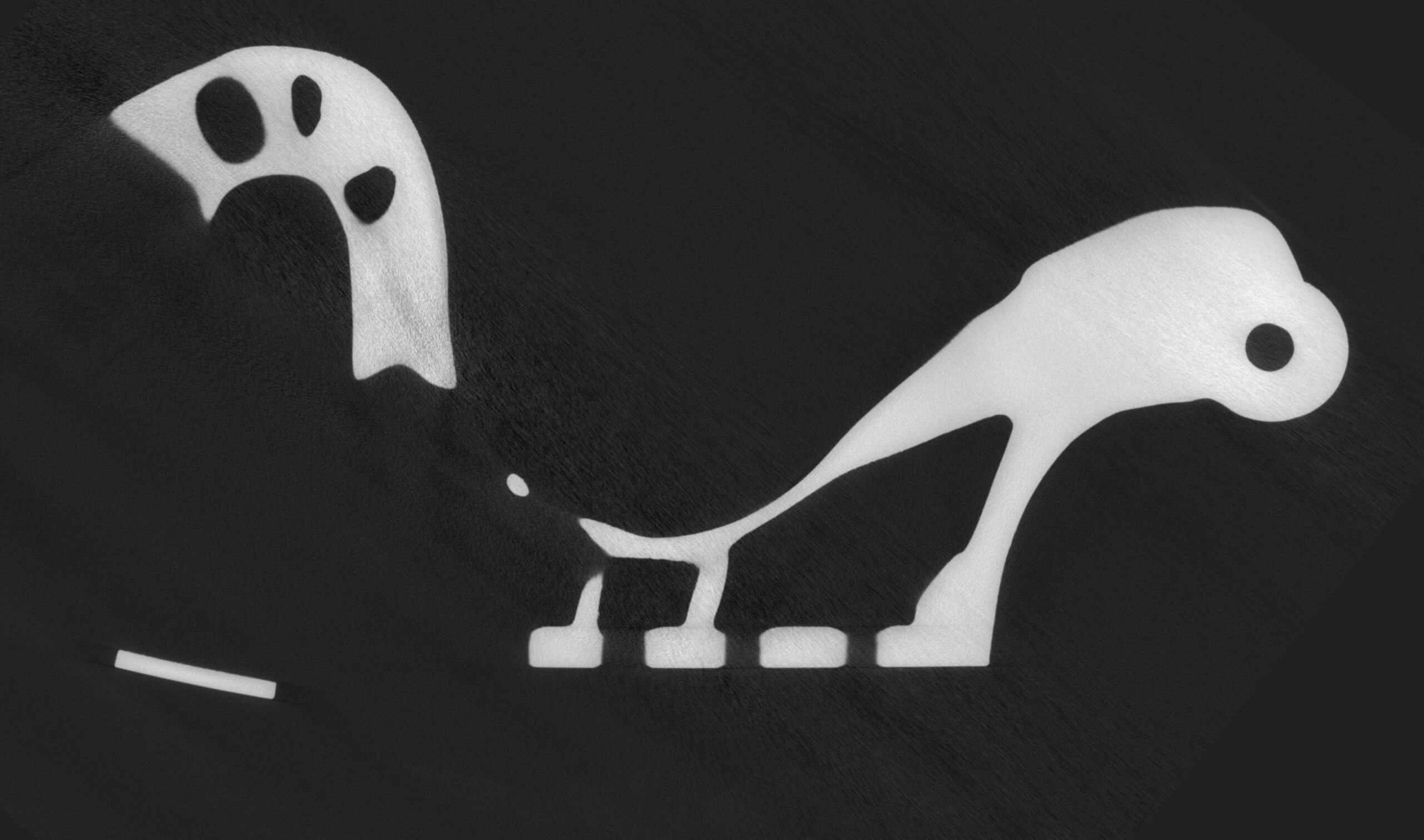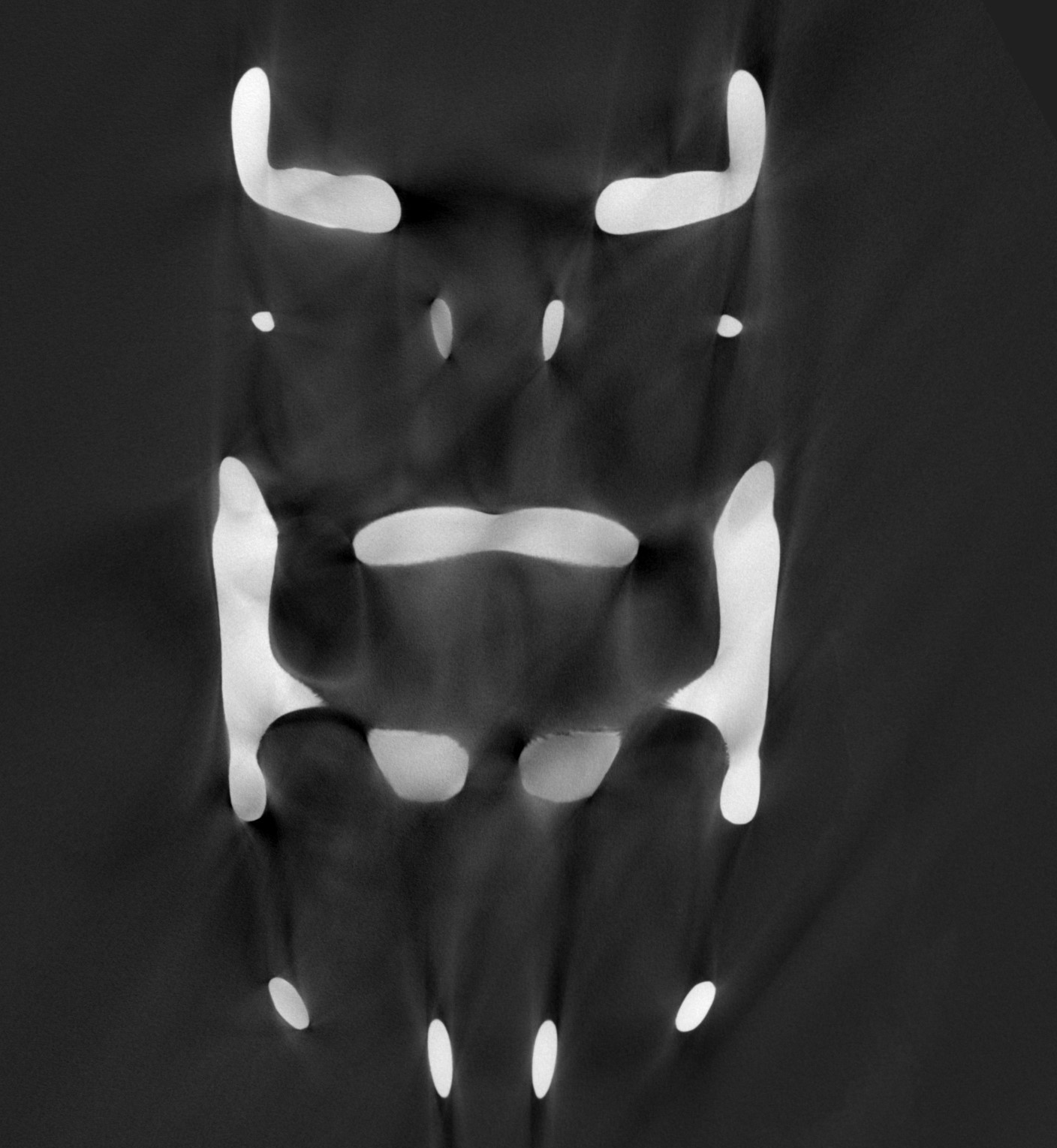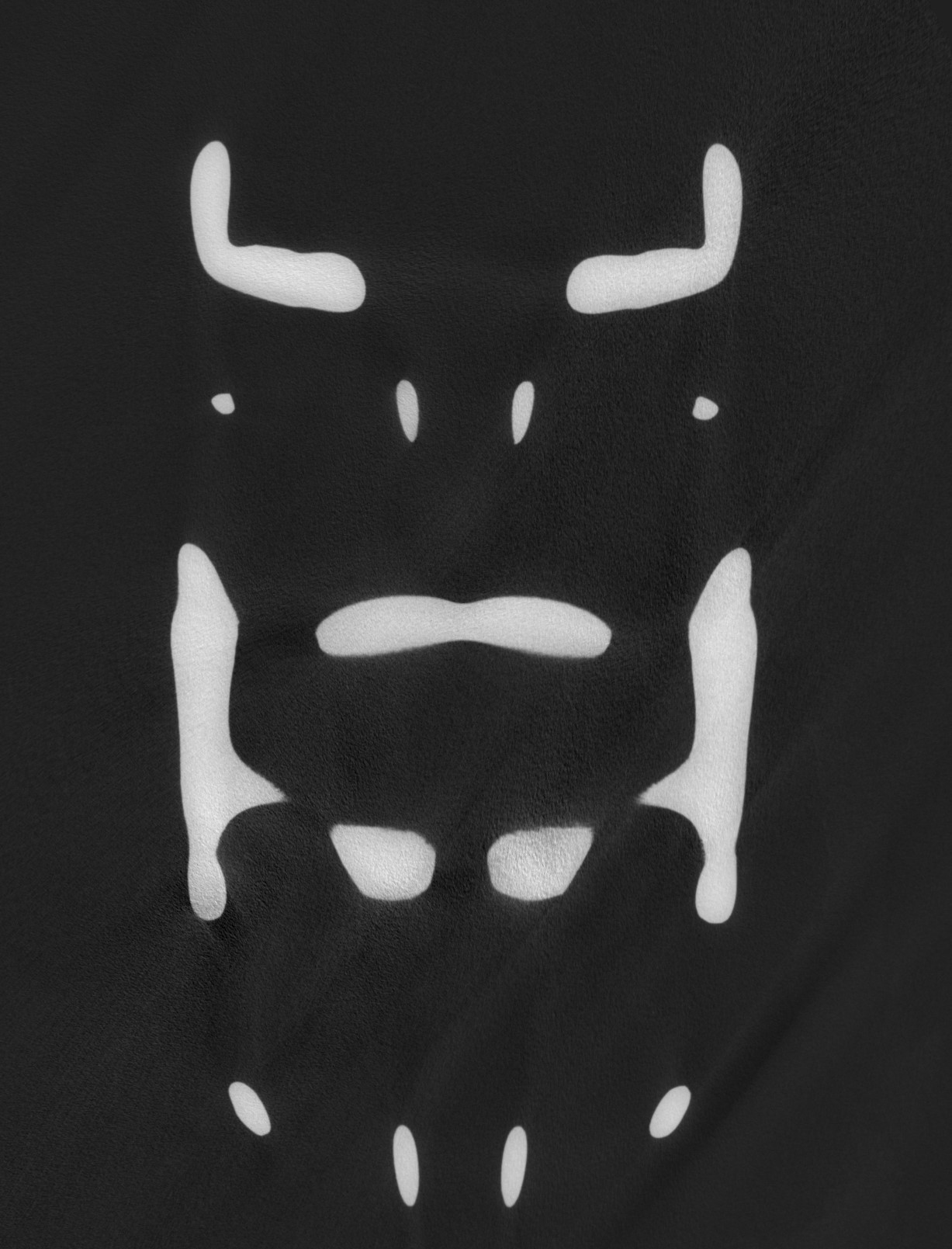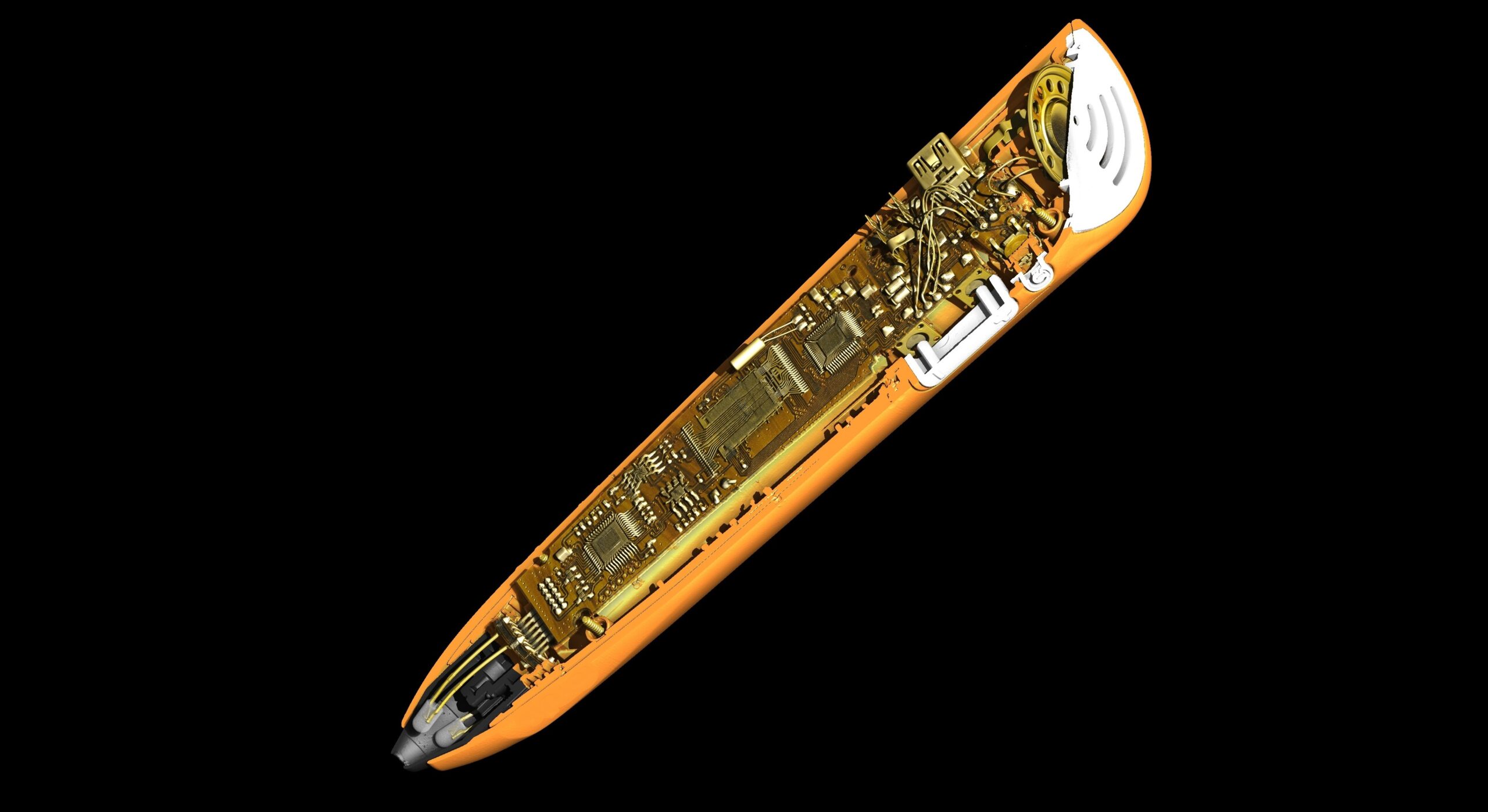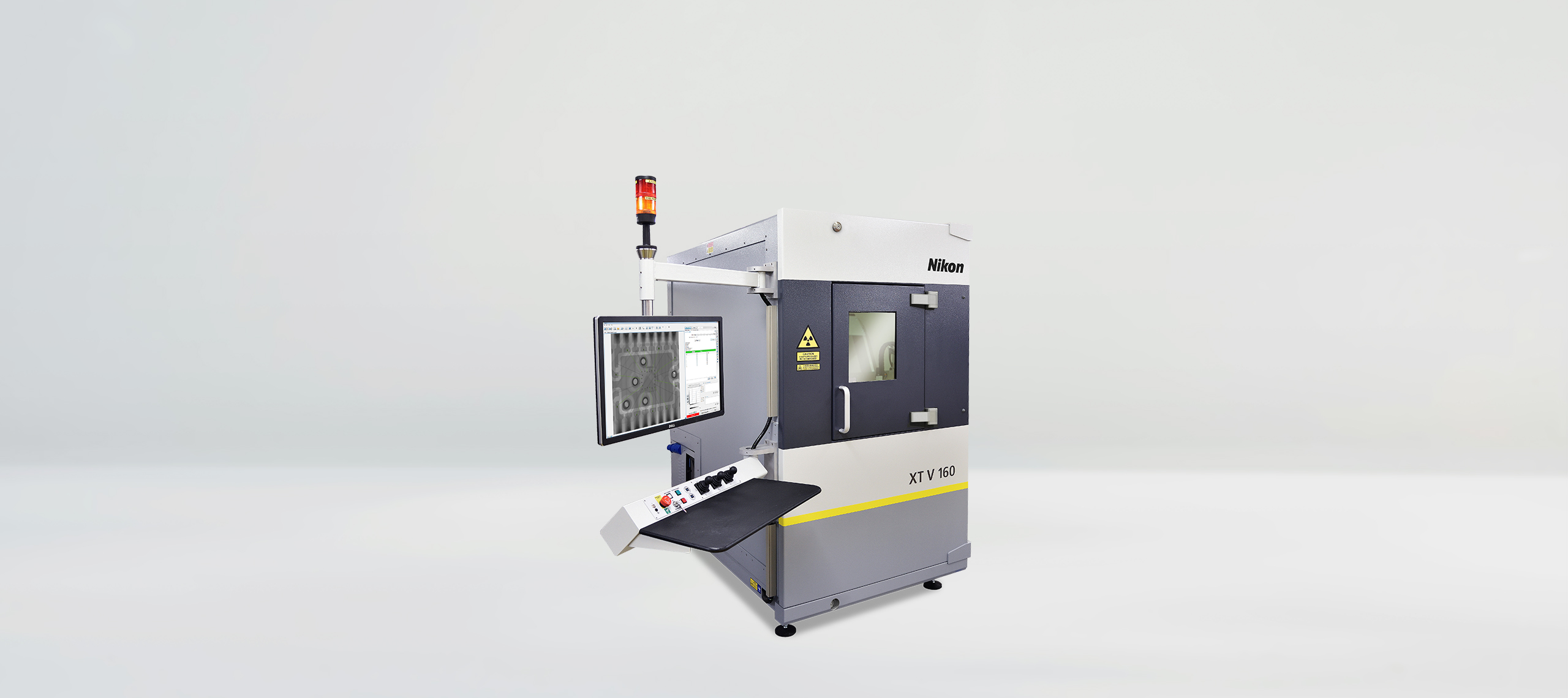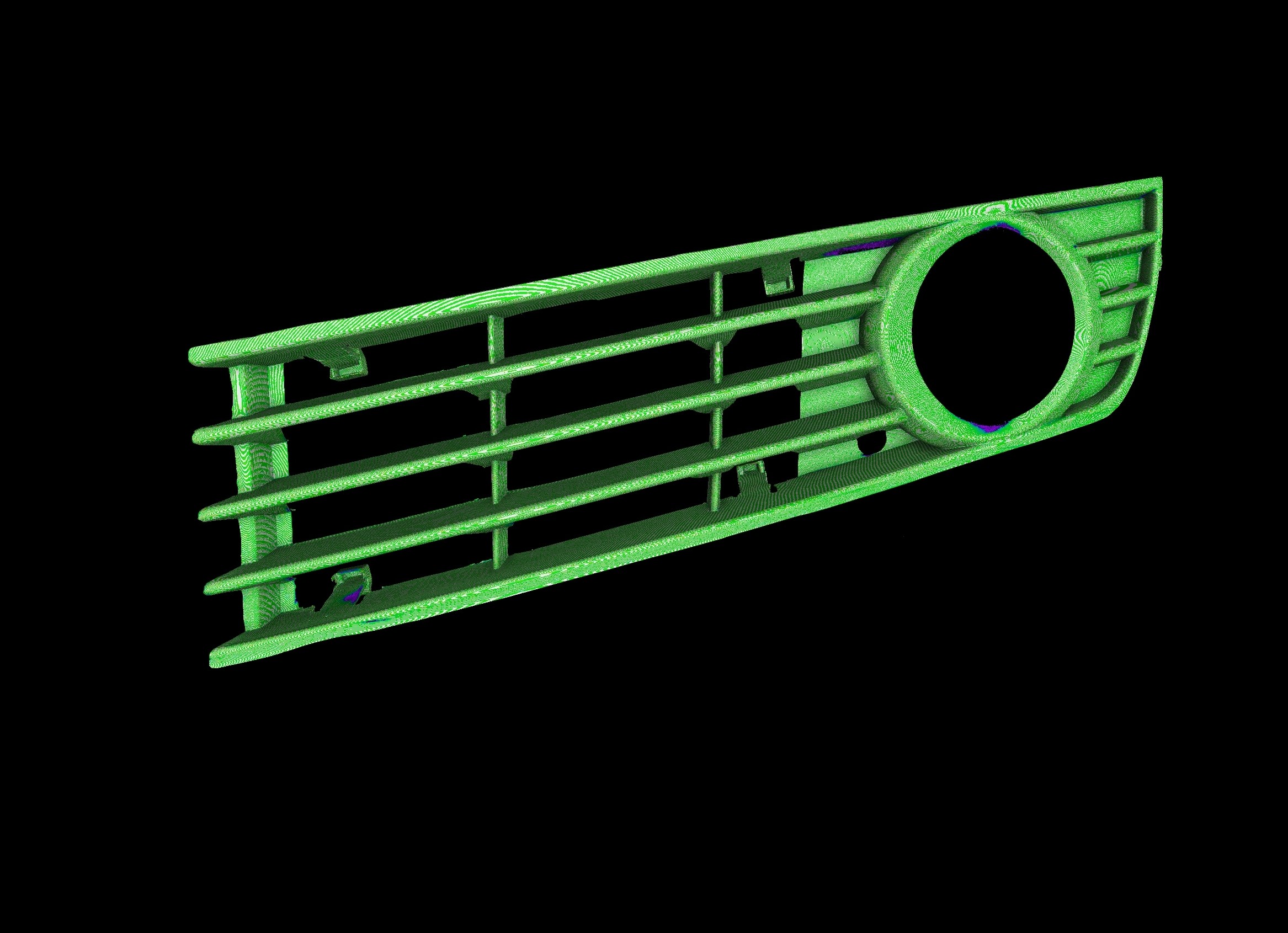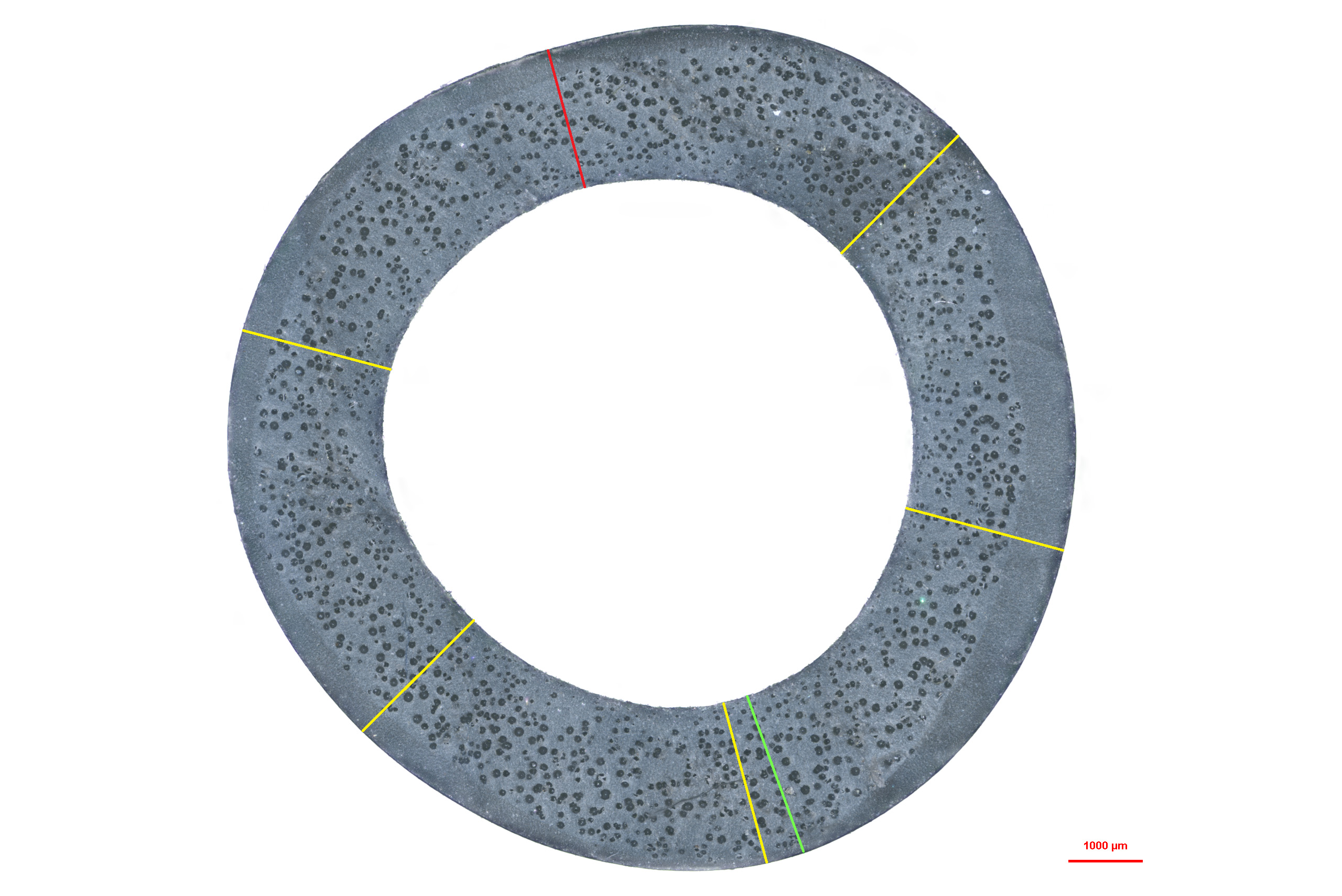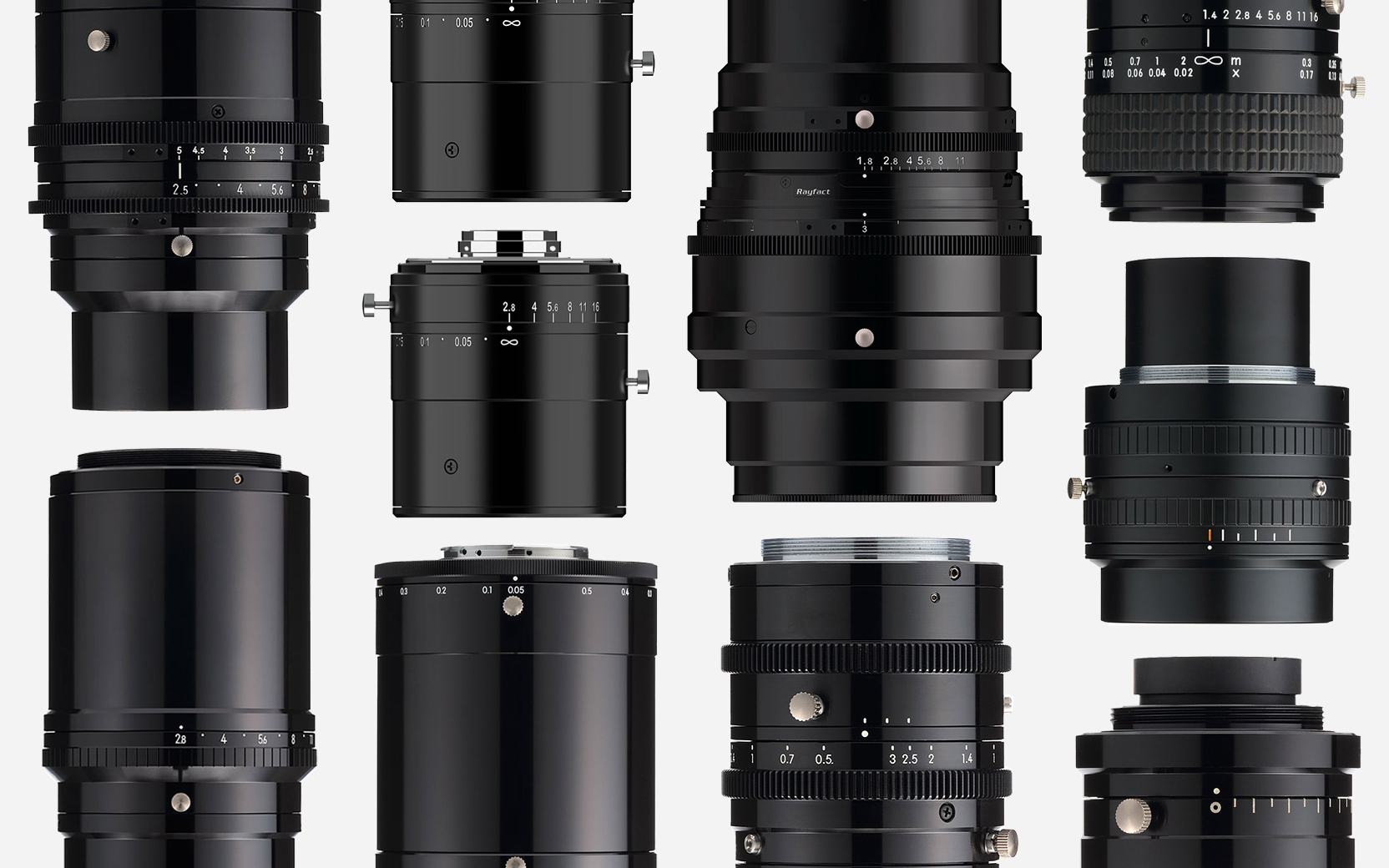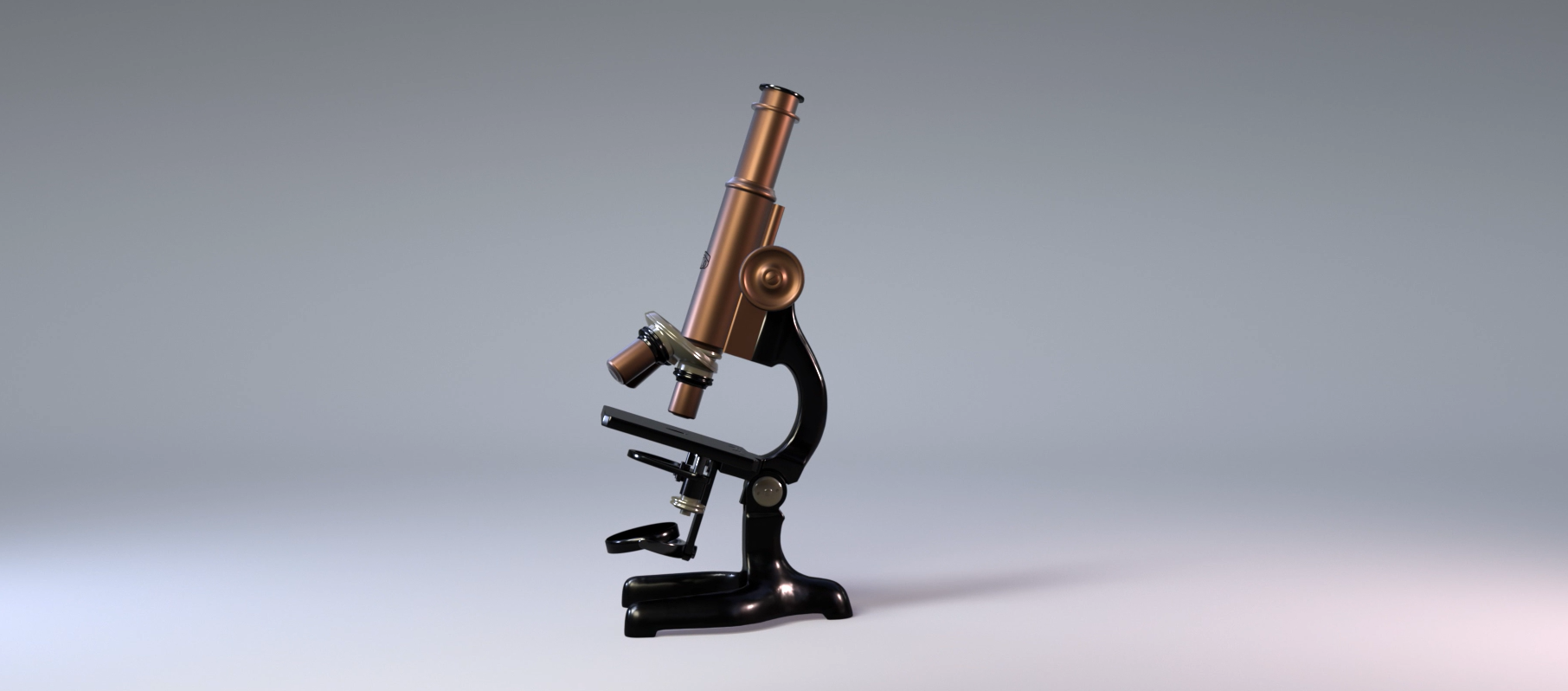In the intricate world of aerospace engineering, where safety, performance, and reliability are paramount, even the most minor components play critical roles. Among these essential elements are aeronautic structural brackets. Although small, these components significantly impact an aircraft’s structural integrity and overall performance.
This month, Onur Cildir, Application Engineer X-ray & CT has scanned two aeronautic brackets made from Ti6Al4V.
Aeronautic structural brackets are crucial components used to join various parts of an aircraft’s structure. They are extensively utilised in the fuselage, wings, engine mounts, and various internal systems. These brackets provide necessary support and stability, helping to distribute loads and stresses evenly across the aircraft structure.
In essence, these brackets act as connectors and reinforcers. They hold together different sections of the airframe, ensure the proper alignment of structural components, and maintain the integrity of the aircraft during operation.
Modern aircraft utilise thousands of these brackets, each designed to perform specific functions based on the part of the aircraft it supports.
The choice of material for aeronautic structural brackets is a crucial decision that directly affects the aircraft’s performance, weight, and longevity. Titanium has become the material of choice for these components, driven by several key factors including:
- High Strength-to-Weight Ratio: Titanium’s exceptional strength-to-weight ratio is one of its most significant advantages. It is as strong as steel but nearly 45% lighter. This characteristic is crucial in aerospace applications, where reducing weight without compromising strength leads to improved fuel efficiency and better overall performance.
- Corrosion resistance: Aircraft operate in diverse environmental conditions, including exposure to moisture, salt, and extreme temperatures. Titanium’s natural resistance to corrosion ensures that structural brackets made from this material remain durable and reliable over long periods, even in harsh environments. This corrosion resistance reduces the need for frequent maintenance and replacements, enhancing the aircraft’s operational lifespan.
- Thermal stability: Titanium maintains its mechanical properties at both high and low temperatures, making it suitable for use in various parts of an aircraft that experience extreme temperature variations. For example, engine mounts and brackets near the propulsion system must withstand high temperatures without losing their strength, and titanium is well-suited for these applications.
- Compatibility with composite materials: Modern aircraft increasingly use composite materials like carbon fibre to reduce weight and improve performance. Titanium is highly compatible with these materials, offering excellent bonding characteristics that contribute to the overall structural integrity of the aircraft.
Given the critical role that aeronautic structural brackets play in aircraft safety and performance, ensuring their quality and integrity is of utmost importance. One of the most advanced and reliable methods for inspecting them is X-ray Computed Tomography (CT).
X-ray CT allows for thorough inspection of titanium brackets without damaging the components. It is essential to identify potential flaws, such as cracks, voids, or inclusions, that could compromise the bracket’s strength and reliability. X-ray CT provides high-resolution 3D images of the internal structure of titanium brackets.
This capability enables engineers to detect even the smallest defects that might be invisible to the naked eye or other inspection methods. Engineers can ensure that each bracket meets stringent safety and performance standards by examining these detailed images.
Beyond detecting internal defects, X-ray CT also allows for precise dimensional analysis. Engineers can verify that the brackets have been manufactured to the exact specifications required for their intended use. Any deviations from these specifications can be identified and corrected before the component is installed in the aircraft.
X-ray CT can assess the uniformity and consistency of the titanium material used in the brackets. This is particularly important for ensuring that the material properties, such as density and porosity, are within acceptable ranges. Variations in material integrity can lead to weaknesses that might compromise the component’s performance under stress.
X-ray CT’s value extends beyond the initial manufacturing phase, playing a crucial role in the ongoing maintenance and lifecycle monitoring of aircraft components. By periodically inspecting brackets in service, engineers can identify early signs of damage, allowing for timely interventions that prevent potential failures, thereby underscoring its long-term value and relevance in the industry.
Without Scatter Correction CT With Scatter Correction CT
These X-ray CT scans were acquired using Nikon’s Circular CT acquisition algorithm at an X-ray power of 55 W and voxel resolution of 70 µm, using a Nikon XT H 225. This system has up to two different Nikon microfocus X-ray sources: a 180 kV, 20 W transmission target and a 225 kV, 225 W reflection target.
This scan used the 225 kV reflection target and a Varex XRD 4343CT flat panel detector. The detector acquired 4476 projections (1 frame/projection) (individual radiographs) at an exposure time of 708 ms and a gain of 24 dB, resulting in a total scan time of 1 hour and 53 minutes.
This sample also used the new “Scatter Correction CT” functionality, and comparison images clearly show how well we can recover CT datasets with scatter artifacts.
In an industry where precision and safety are non-negotiable, the combination of titanium’s superior properties and the advanced inspection capabilities of X-ray CT ensures that aeronautic structural brackets continue to perform their vital role in keeping aircraft safe and operational.

